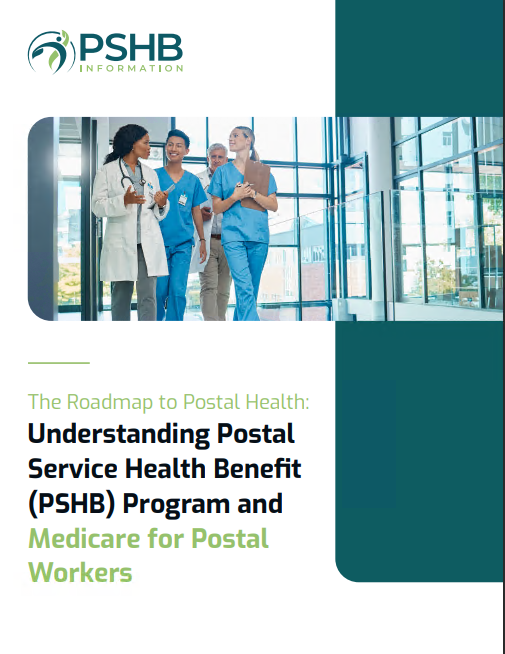Key Takeaways
- The Postal Service Health Benefits (PSHB) program will streamline health insurance options for postal workers, aligning them more closely with federal benefits.
- Retired postal workers need to understand how PSHB may impact their coverage options, especially with regard to Medicare integration.
How PSHB Will Impact Health Benefits for Postal Workers After Retirement – What You Should Be Aware Of
The Postal Service Health Benefits (PSHB) program represents a significant shift in how health benefits will be managed for postal workers, both current and retired. As part of the Postal Service Reform Act of 2022, PSHB is designed to bring postal employee benefits under a more unified umbrella with the Federal Employees Health Benefits (FEHB) program. This change, which will be fully implemented by 2025, could impact how retired postal workers receive and manage their healthcare coverage.
Understanding these changes is essential for postal retirees, as PSHB introduces new healthcare structures and choices, particularly with Medicare. Let’s explore how the PSHB will affect your health benefits after retirement and what you need to be aware of to make informed decisions.
The Transition to the Postal Service Health Benefits Program
The Postal Service Reform Act mandated the creation of the PSHB to streamline and modernize health benefits for postal employees. Currently, postal workers receive health coverage through the broader Federal Employees Health Benefits (FEHB) program, but PSHB will be a separate entity tailored specifically for postal employees. However, it will still function under the larger framework of federal health benefits.
This transition is expected to simplify the insurance options for postal employees by creating a distinct system with more targeted benefits. For retirees, this means that you will eventually need to enroll in the PSHB plan during the open season, beginning in 2024 for coverage effective in 2025.
Coordination with Medicare: Key Changes
One of the most significant changes brought about by PSHB is the integration of Medicare for postal retirees. Under the new rules, retirees who are eligible for Medicare Part A and Part B will be required to enroll in these programs in order to receive full health benefits from the PSHB.
This coordination with Medicare can provide more comprehensive coverage, as Medicare will serve as the primary payer, with PSHB covering any remaining costs. However, if you are already retired and have not yet enrolled in Medicare, it’s essential to understand how this requirement may impact you. For those turning 65 after the PSHB program goes into effect, the requirement to enroll in Medicare Part A and B will become a critical factor in maintaining access to health benefits.
Potential Benefits of Medicare Enrollment
Medicare enrollment under the PSHB offers several advantages for postal retirees. By enrolling in Medicare Part A and Part B, retirees can often reduce out-of-pocket healthcare expenses. Medicare acts as the primary payer, covering hospital stays, outpatient care, and preventive services. PSHB, as the secondary payer, may then cover additional costs such as co-pays, coinsurance, and deductibles, making the overall healthcare coverage more robust.
Additionally, this integration helps postal retirees manage their healthcare costs by reducing the risk of large medical bills. Since Medicare will cover the majority of expenses, PSHB will provide a safety net for out-of-pocket costs. This ensures that retirees can maintain comprehensive coverage without facing high premiums or medical expenses.
What If You Don’t Enroll in Medicare?
It’s important to note that if you are eligible for Medicare and choose not to enroll, your benefits under the PSHB program will be significantly reduced. For retirees who prefer not to enroll in Medicare, the PSHB will offer only minimal coverage, potentially leaving you responsible for paying much higher out-of-pocket costs. This underscores the importance of planning ahead and understanding the implications of Medicare enrollment in relation to your postal health benefits.
For those who are already receiving Social Security benefits, Medicare enrollment should happen automatically at age 65. However, if you are not enrolled in Social Security, it’s essential to apply for Medicare during the open enrollment period to avoid coverage gaps under PSHB.
Understanding the Enrollment Process
The enrollment process for PSHB will differ from the current FEHB system. Postal retirees will need to select from PSHB plans during the open enrollment period, which typically occurs in the fall. Starting in 2024, you will be able to review the available PSHB plans and choose one that meets your healthcare needs. The plans under PSHB will likely offer similar coverage options as those available under FEHB, but the key difference will be the required coordination with Medicare.
For retirees who are already enrolled in FEHB, there will be a transition period to shift to the PSHB. This transition is expected to be seamless, with most of the administrative work handled by the Office of Personnel Management (OPM). However, it’s important to stay informed about deadlines and requirements to ensure that your health benefits continue without interruption.
Considerations for Postal Workers Approaching Retirement
If you are nearing retirement, understanding the impact of the PSHB program is critical for planning your healthcare needs. There are a few key factors to keep in mind:
-
Medicare Eligibility: As mentioned, retirees who are eligible for Medicare will be required to enroll in Parts A and B. It’s important to understand how Medicare fits into your retirement healthcare strategy, as it will be a vital component of your PSHB coverage.
-
Transitioning from FEHB to PSHB: If you are already enrolled in FEHB, your plan will eventually be phased out and replaced with PSHB coverage. Make sure to stay updated on the latest information regarding enrollment deadlines and plan options.
-
Open Enrollment: For postal workers who are still working, the open enrollment period for PSHB will allow you to make choices about your health coverage as you approach retirement. Reviewing your options carefully during this period can help ensure that you select the best plan for your needs.
Navigating the Changes: Practical Tips for Retirees
As the PSHB program rolls out, there are several steps retirees can take to navigate the changes smoothly:
- Stay Informed: Keep an eye on updates from the Office of Personnel Management (OPM) and the U.S. Postal Service regarding the transition to PSHB. These updates will provide critical information about deadlines, plan options, and the enrollment process.
- Consult with Experts: If you are unsure about how the PSHB changes will affect your benefits, consider consulting with a licensed insurance agent. They can provide personalized advice and help you make informed decisions.
- Plan for Medicare Enrollment: If you are approaching age 65, start planning for Medicare enrollment now. Ensure that you understand the enrollment periods and how Medicare will work alongside your PSHB plan to maximize your benefits.
Looking Ahead: Preparing for the Future of Postal Health Benefits
The introduction of the Postal Service Health Benefits program marks a significant shift in the way health benefits are structured for postal retirees. While the program promises to streamline coverage and integrate more seamlessly with Medicare, it also requires retirees to be proactive in understanding the changes and how they will impact their healthcare coverage.
By staying informed, planning ahead for Medicare enrollment, and understanding the new options available under PSHB, retirees can ensure that they maintain comprehensive healthcare coverage in retirement. The PSHB program, while new, offers an opportunity to align postal worker benefits with broader federal health plans, offering potential for improved coverage and cost savings.
Moving Forward with PSHB: Next Steps for Retirees
As the PSHB program is set to launch, it’s crucial for retirees to prepare. Make sure you review all official communications from OPM and the U.S. Postal Service, especially regarding open enrollment dates and Medicare coordination. By staying on top of these changes, you’ll be better positioned to take advantage of the new benefits available under PSHB while maintaining the healthcare security you need in retirement.
Contact Information:
Email: [email protected]
Phone: 5125552345





